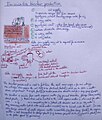
Size of this preview: 511 × 600 pixels. Other resolutions: 204 × 240 pixels | 409 × 480 pixels | 654 × 768 pixels | 873 × 1,024 pixels | 2,029 × 2,381 pixels.
Original file (2,029 × 2,381 pixels, file size: 300 KB, MIME type: image/jpeg)
File history
Click on a date/time to view the file as it appeared at that time.
| Date/Time | Thumbnail | Dimensions | User | Comment | |
|---|---|---|---|---|---|
| current | 08:18, 22 June 2009 |  | 2,029 × 2,381 (300 KB) | Genetics4good | {{Information |Description={{en|1=A schematic showing emissionless biochar production. The schematic makes it clear that the co² cannot escape at the pyrolysis unit due to the fact the the pyrolysis unit is hot; hot air rises and thus creates a suction e |
File usage
The following pages on the English Wikipedia use this file (pages on other projects are not listed):
Global file usage
The following other wikis use this file:
- Usage on en.wikiversity.org
Well, that’s interesting to know that Psilotum nudum are known as whisk ferns. Psilotum nudum is the commoner species of the two. While the P. flaccidum is a rare species and is found in the tropical islands. Both the species are usually epiphytic in habit and grow upon tree ferns. These species may also be terrestrial and grow in humus or in the crevices of the rocks.
View the detailed Guide of Psilotum nudum: Detailed Study Of Psilotum Nudum (Whisk Fern), Classification, Anatomy, Reproduction